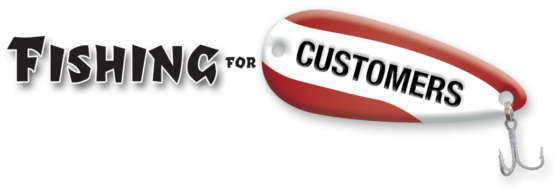Q: People keep telling me I should give stuff away to get more customers in my store. But doesn’t that just draw people who want free stuff?
A: It stands to reason, doesn’t it, that not everyone will buy from you? The majority of people don’t need what you’re selling. Many won’t need it for some time. Of those who are current prospects, some aren’t willing to pay your price. Some just don’t trust you.
Getting people in your store (or in your sales funnel) who eventually will need what you sell, should help them to become familiar with you. That familiarity should lead to trust, and sales. The free stuff you give away is the price you pay to “buy” customers. Other businesses pay for advertising. Some pay to have more people on staff, providing superior customer service, and resulting in outrageous word-of-mouth.
One way or the other, we all purchase our new business.
But your question is more specific: does giving away “stuff” train your pool of prospects to come to you when they want something for free? The unwritten question is, are you wasting your money by training them to come to you ONLY when they want free stuff? Yes, and no. Yes, in the case of some folks, its likely they will only show up for the free stuff. No, you’re not (necessarily) wasting your money.
Flash back with me to 1713 and Jacob Bernoulli’s Law of Large Numbers, sometimes called the “Law of Averages,” which guarantees stable, long-term results for random events. A casino may lose money on any given spin of their roulette wheel, for example, but always wins over a large number of spins.
Your “free stuff” works like the roulette wheel. A lot of people step up to spin.
How much will you win when the ball lands on red?
To calculate whether you’re wasting money, or have a valid marketing expense, you need three numbers. Fortunately, this is simply a matter of record keeping.
First, how much are you spending to get each prospect in the door?
Second, how much does each spend when they buy from you?
Finally, what percentage of the people attracted by your free stuff promotion, buy?
Let’s say you spend $100 and get 50 people to show up. Your cost per prospect is $20.
When one of those 50 people buys, she spends, on average, $300.
And through experience, we know roughly 4 percent will buy. That makes two sales of $300 ($600 gross), from your $100 investment.
Is this a good investment? Spend $100, get back $600? That depends on your profit margin, doesn’t it? At a standard “keystone” mark-up, your profit is $300, and this promotion is a good one.
Are you training people to come in for the free stuff?
Most of us expect “fairness,” and are disappointed when people get rewarded for behavior we don’t approve of. Yeah, that’s to be expected.
But good marketers, like successful casinos, concentrate more on the sales, and less on the non-buyers.
Run the numbers. Is the overall promotion profitable? Does it produce new customers? Then don’t stop doing it because you resent the freeloaders who only show up for the stuff. The Law of Averages will work to your favor when you’re fishing for customers. And your calculations will make the decision for you.
Your Guide,
Chuck McKay
 Your Fishing for Customers guide, Chuck McKay, gets people to buy more of what you sell.
Your Fishing for Customers guide, Chuck McKay, gets people to buy more of what you sell.
Questions about buying your customers be directed to ChuckMcKay@FishingforCustomers.com. Or call Chuck at 304-208-7654.


